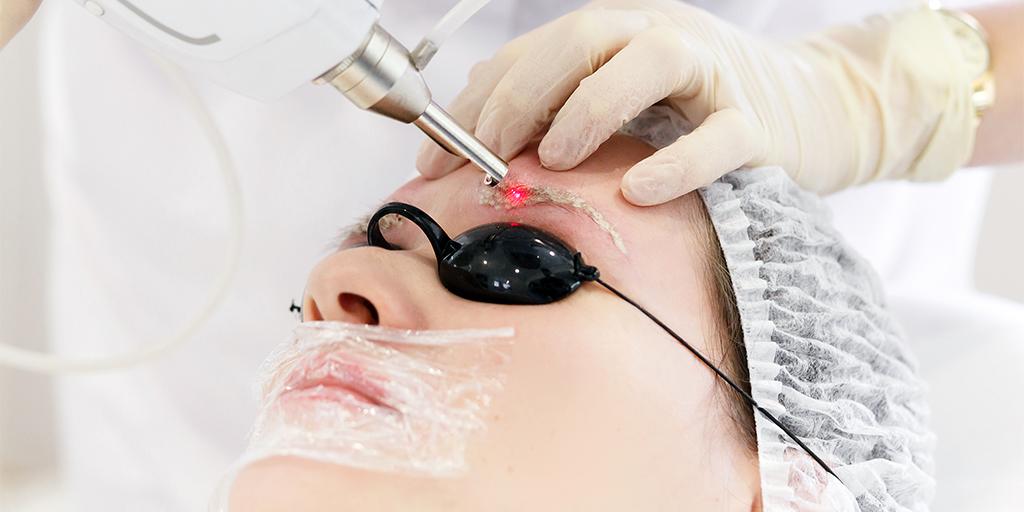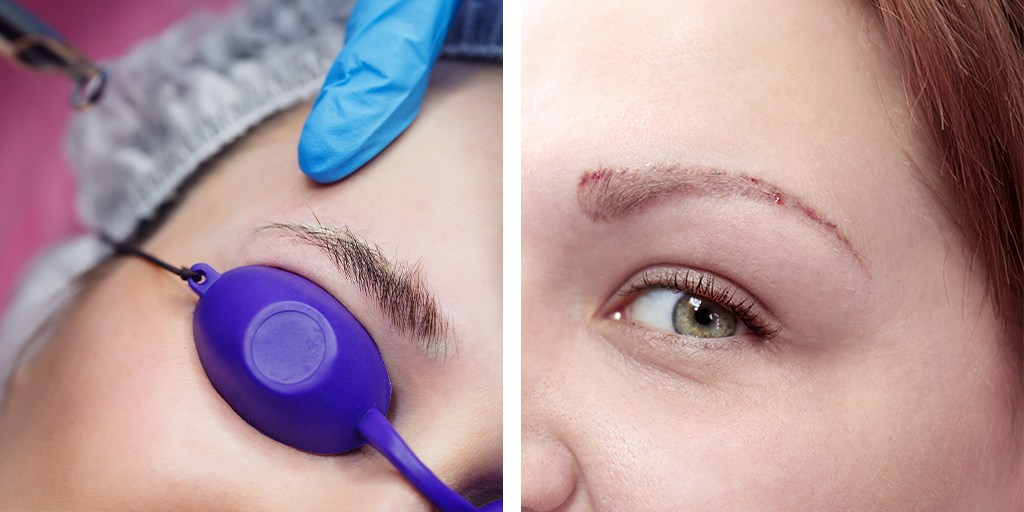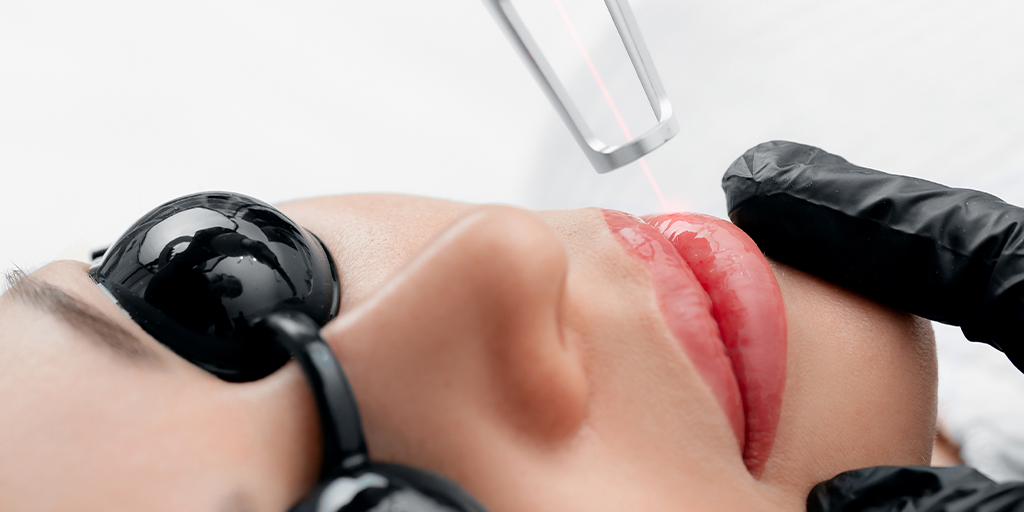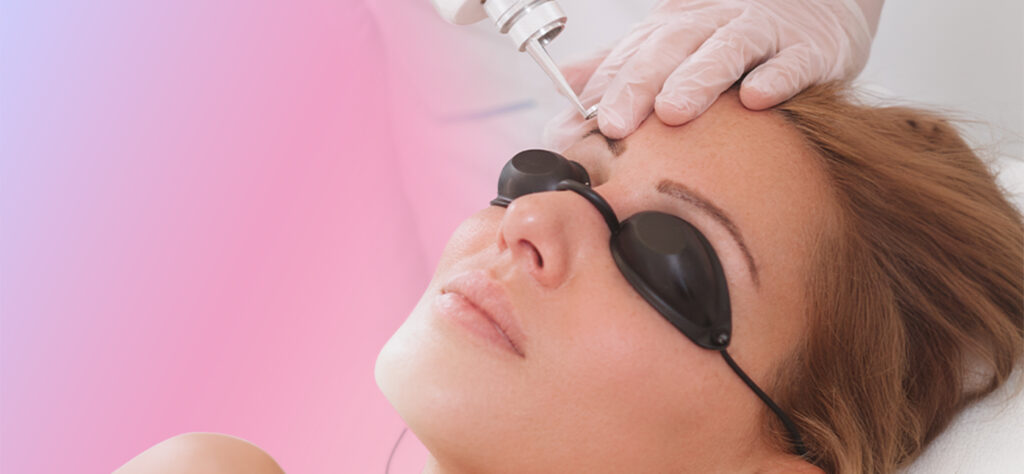What Is Laser Tattoo Removal?
As lovers of PMU, tattoos, and all forms of beautiful self-expression, it can be hard to talk about when those treatments just need to go!
Whether your style has changed, or the treatment or tattoo has faded, removal might be necessary to work on a newer look!
We’re diving into what laser tattoo removal actually is and why you’d think about getting it

How does laser tattoo removal work?
There are two types of lasers most commonly used for laser tattoo removal - Q-switched lasers and picosecond lasers.
Q-switched lasers are incredible for targeting darker pigments like black and blue ink. These lasers are pulsed, generating up to thousands of degrees of heat within a nanosecond and then cooling off instantly. Picosecond lasers are even faster - a picosecond is 1/1000th of a nanosecond - so the already low chance of harm from Q-switched lasers becomes even lower, and they can target a broader range of pigment colours.
When the laser hits your skin, it penetrates through to the pigment contained in your dermis. The laser heats these pigments up to such a high temperature that they shatter apart, allowing your body to do what it does best - clean up the waste!
How long does it take?
The length that removal takes varies based on a few factors, including pigment colour, skin type, size, and skin sensitivity. It’s always better to go slowly, and allow for more sessions than you strictly need in order to prevent damage to the surrounding skin - for that reason it’s usually better to overestimate the number of sessions!
You should leave around 8 weeks between appointments to allow your client to recover, but also to give the body time to clear up the particles of pigment, which can take 7-8 weeks.
Are there any side effects?
When blasting high-powered lasers at the human body, there’s always a risk of damage!
What’s more likely than damage is a change in colour or texture in the skin. Usually, this is only temporary, but it can take up to 12 months to resolve and may not ever go away. This is always a risk that your client should be aware of before proceeding, and may be a higher risk in clients with a history of hypertrophic or keloidal scarring.
These lasers won’t give you cancer or destroy your skin in other ways, but freshly-lasered skin may be more prone to sun-damage!

What should my clients expect?
If you’re offering laser tattoo removal - or even just suggesting it to get a better canvas for your work - your client will probably have some questions about how the removal process will go!
First of all, they’ll have a consultation to discuss the tattoo, skin type, health and immune response. This is when the removal technician will give a realistic timeline for removal and expectation of results.
For each treatment day, the area of the tattoo will be cleaned and a numbing cream might be applied. Once it begins, your client should expect to feel a burning pain that will usually be short-lived but intense. Most people rank the pain as higher than the initial tattoo or treatment, but sessions are kept much shorter.
After each appointment, your client will experience redness, swelling and perhaps blistering. A crust may develop over the treatment site - it’s very important that they never scratch or remove this crust before it’s ready to fall off.
Aftercare is very similar to your tattoo or PMU treatment’s healing process - keep the area clean, dry and protected from the sun. Allow scabs to fall off naturally, but keep the area moisturised with a suitable aftercare cream.
What to look for in laser tattoo removal?
If you’re having a previous PMU treatment removed - especially on the face - we’d strongly urge you to look for a PMU specialist to do so!
Laser technicians who have only worked on tattoos may not have the knowledge and ability to remove lighter pigments from the more delicate skin of the face. However if you are removing a previously-done tattoo, this should be fine.
The other advantage to having your removal done in a PMU clinic is that the artists can help you with planning for your future treatments!

So if you or your client are worried about going under the laser, it’s important to know that these treatments have been tried and tested for a long time, and are overall incredibly safe - so long as you go with a qualified laser technician!
